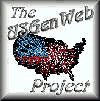
INGenWeb Project

This
Changing World
The
Columns of Will Ball
Logansport Press, April 10, 1949
Before the railroads came, there were
homes all along the north bank of the Wabash from “the Point”, or mouth of the
Eel River, to 17th. There
were a few gaps but for the most part, houses filled the spaces pretty
well. From 1st Street to 5th
Street, the first street paralleling the river, was known as Canal; from just
above 5th to about 10th it was Wabash Avenue, as it is
today. Beginning at 12th (12th
ran clear to the river before the railroads came through), Indiana Street
began, running southeast, parallel to Toledo Street (which is Woodlawn
today). This was south of where the
Pennsylvania tracks now lie. Ohio
Street, only about a block long, paralleled Indiana between that street and the
river, above the place where the stream makes an abrupt turn to the south. Young Street crossed Indiana at right angles,
about where 13th Street would intersect and Illinois crossed both
Indiana and Ohio a block further east.
This was Jerusalem. No one whom
the writer has interviewed seems to know how the name came to be applied to the
little group of 15 or 20 houses that formed a pleasant settlement more or less
isolated from the rest of town in the beginning and almost completely cut off
in later years.
General John Tipton chose that location
for his homestead. His house stood just
about where the round house is now located. The surrounding land was under cultivation and
it is not likely that other homes were built in the vicinity until after his
death which occurred in April of 1839.
He owned all the land between the rivers outside of the corporation up
to about 22 or 23. After his death his
administrators sold many tracts for town lots.
Judge Dykeman plotted this section as his first and second additions to
the town, probably about the time the railroads came through, in the early 1860’s.
Transcribed by Christine Spencer, April,
2009
| Home | Cemeteries | Census | Vital Records | Biographies & Genealogies | Organizations | In the News | Military | Land | Photo Gallery | Resouces, addresses & Links |